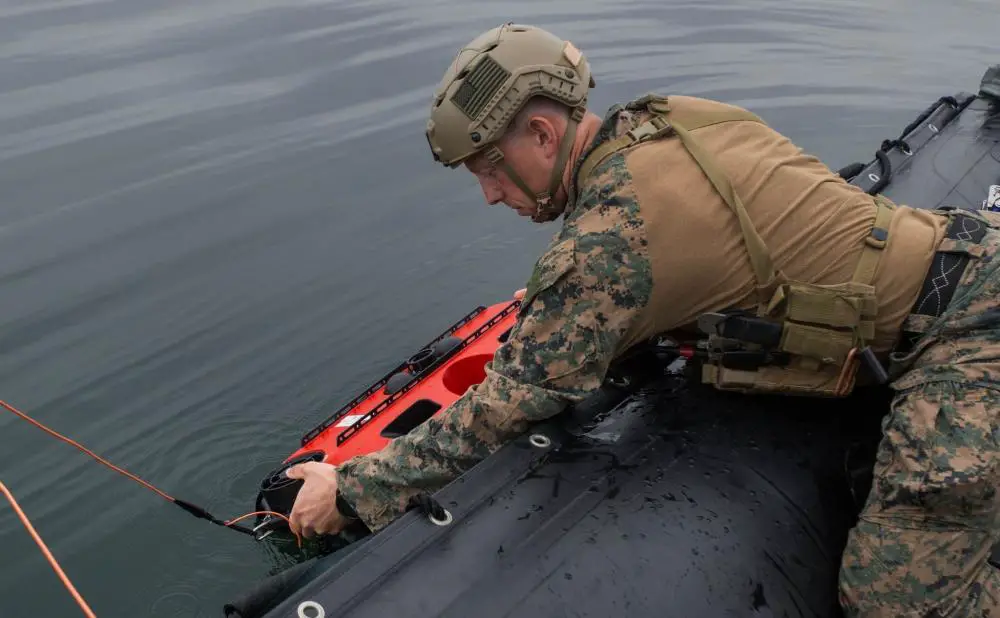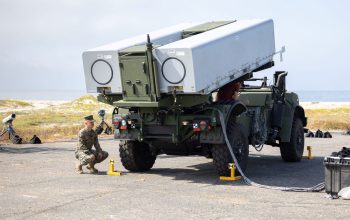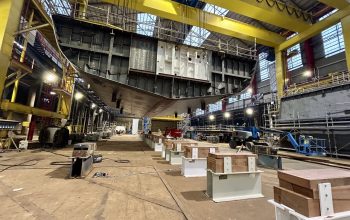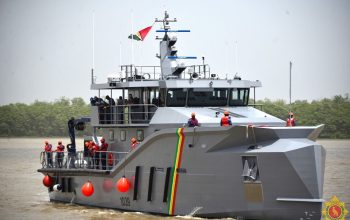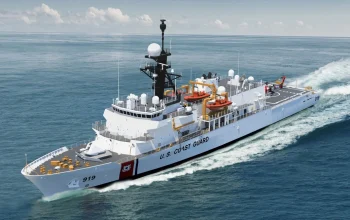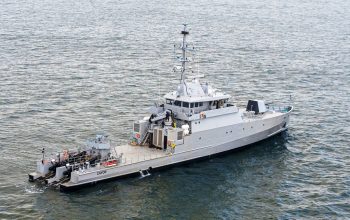Marine Corps Systems Command began fielding an amphibious, unmanned robot system to support littoral operations globally. The Explosive Ordnance Disposal Remotely Operated Vehicle is a next-generation, box-shaped robot that enables Marines to navigate safely and efficiently in shallow waters to identify and neutralize explosive hazards and other threats. The ROV employs sound navigation and ranging sensors, a high-definition video capability and cameras that provide real-time feedback for EOD divers. It includes an articulator arm that helps Marines maneuver through underwater foliage or neutralize explosive threats.
“This robot gives Marines eyes in the water. It is a capability the Marine Corps has never before had. It is a system that saves Marine divers from having to swim hundreds of meters, an activity that can tire them out. The ROV gives us a remote means to search underwater while also helping us stay at our best when having to prosecute explosive devices. the ROV’s tether feature, which keeps EOD technicians at a safe distance from explosive hazards. Before the capability, Marine divers could only disrupt or dispose underwater explosive threats by swimming in close proximity, exposing them to hostile elements,” said Master Sgt. Patrick Hilty, an Explosive Ordnance Disposal project officer at MCSC.
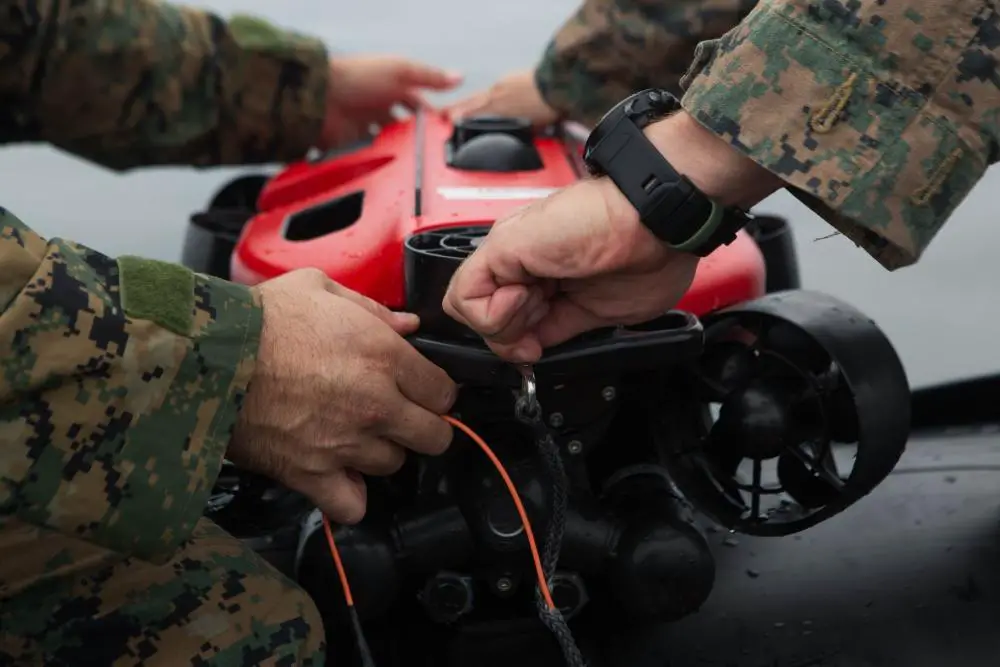
Marines can use the robot for various amphibious missions. For example, they can leverage the ROV to search harbors before docking a Marine Expeditionary Unit ship. Operators can use it for activities in very shallow waters, conducting littoral lost object searches, damage assessments and mine countermeasure missions. The ROV is highly stable in an underwater environment. He noted how the machine requires minimal equipment and reduces the Marine Corps’ overall footprint during operations. This intuitive system has the ability to complete critical underwater tasks much deeper than manned missions can. This ultimately saves the Marine Corps time and money required for training. The ROV also supports naval integration. In 2019, the Navy acquired this commercial off-the-shelf capability. The service conducted a series of tests to determine its viability for EOD missions.
The robot is the first increment in the Littoral Explosive Ordnance Neutralization Family of Systems. This series of robotic capabilities will allow Marines to search a wider area in the littorals, including the very shallow water, surf and beach zones. Achieving Force Design 2030 remains an ongoing, concerted effort for the Marine Corps, as repeatedly stated by Commandant of the Marine Corps Gen. David Berger. This goal requires the acquisition of next-generation, unmanned systems, like the ROV, to support Expeditionary Advanced Base Operations. The Marine Corps has never before leveraged waters for missions. In the past, Marines would begin operations from land, typically a beach. This new concept requires a shift in the paradigm in how the Marine Corps operates. Fielding capabilities that conform to the vision to support an evolving naval fight will ultimately support the present and future Marine.



